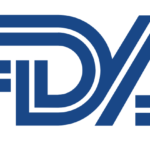The Food and Drug Administration has scheduled a review of the Pfizer/BioNTech COVID-19 vaccine for this Thursday, Dec. 10. If the Vaccines and Related Biological Products Advisory Committee finds the study data results and safety to be acceptable, it is likely the Committee will approve an Emergency Use Authorization for the vaccine, effective immediately. This will be the first COVID-19 vaccine approved in the U.S.
Earlier today, the FDA released a 53-page analysis and briefing document for the Vaccines and Related Biological Products Advisory Committee. The briefing document confirms the safety and efficacy of the vaccine.
According to the Washington Post, “The FDA’s career scientists undertook their own thorough analysis of the data and confirmed Pfizer’s assessment that the vaccine regimen was 95 percent effective at preventing disease in its large clinical trial. Reviewers found a promising signal that even after the first shot, the two-dose regimen could begin to protect people, particularly against severe illness. The vaccine had tolerable ncluding sore arms, fatigue, headaches, muscle pain and chills that typically resolved within one to two days.”
The briefing document notes that four of the 38,000 participants in the Phase 3 Clinical Trial developed Bell’s Palsy, All four cases were in the actual vaccine group with none in the placebo group. These cases occurred at 3, 9, 37, and 48 days after vaccination. According to the National Institutes of Health, Bell’s Palsy is a muscle weakness on one side of the face, and generally resolves within 6 months. The NIH Fact Sheet states “Most scientists believe that reactivation of an existing (dormant) viral infection may cause the disorder. Impaired immunity from stress, sleep deprivation, physical trauma, minor illness or autoimmune syndromes are suggested as the most likely triggers.”
According to the FDA brief, the numbers of those with Bell’s Palsy are consistent with the occurrence in the general population, and it’s not clear if there is a causal relationship with the vaccine.
The Committee consists of a core of 15 voting members including the Chair. Members and the Chair are selected by the Commissioner or designee from among authorities knowledgeable in the fields of immunology, molecular biology, rDNA, virology; bacteriology, epidemiology or biostatistics, vaccine policy, vaccine safety science, federal immunization activities, vaccine development including translational and clinical evaluation programs, allergy, preventive medicine, infectious diseases, pediatrics, microbiology, and biochemistry.
Pfizer/BioNTech, working with the Federal Government, already has a distribution plan. Distribution is generally based on population. The first shipment to Hawaii is due next week and should be slightly fewer than 5,000 doses, which would cover 2,500 people as the makers recommend a two-shot regimen.
The next vaccine due to be reviewed by the FDA for Emergency Use Authorization is one made by Moderna. Local health experts say Hawaii is likely to get a total of 40,000 tests by the end of the year, which would cover 20,000 people getting vaccinated. The State’s first vaccines are scheduled to go to front line healthcare workers, then seniors living in congregate facilities, then first responders and essential workers before moving on to those immuno-compromised people and seniors, then to the general community. It will take well into 2021 for everybody in the state who wishes to get vaccinated.
